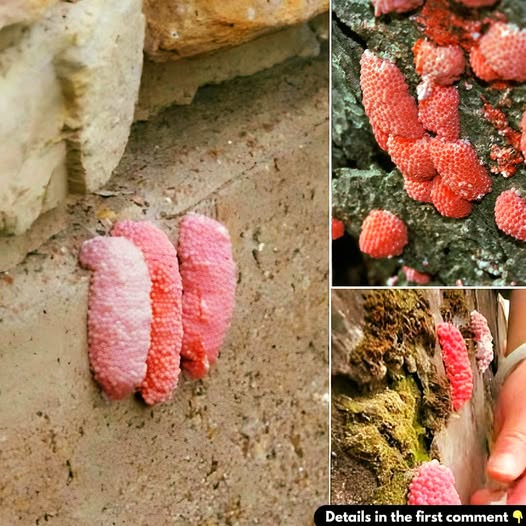If you’ve spotted bright pink eggs in your garden or on your water features, they may look harmless, but these vibrant clusters are actually the eggs of the invasive apple snail. These snails, originally from South America, have spread across the world, posing a significant threat to local ecosystems and agriculture. Understanding the risks and knowing how to handle these eggs can help protect your environment from their rapid invasion.
What Are Apple Snails?
Apple snails are popular in aquariums due to their unique size and appearance. Some species, such as Pomacea bridgesii and Pomacea diffusa, are sought after because they don’t eat aquarium plants. However, in the wild, these snails are a major problem. Apple snails can grow up to 6 inches, making them one of the largest freshwater snails in the world. They are notorious for damaging plants, crops, and natural habitats.

Why Are Apple Snails Dangerous?
Apple snails are considered one of the 100 Worst Invasive Species globally. They thrive in wet environments like ponds, lakes, and swamps, particularly in warmer climates. These snails can even travel across land by sealing themselves in their shells to survive dry periods. As temperatures rise globally, apple snails are migrating to new regions, causing widespread damage.
The problem with apple snails in the U.S. started with irresponsible aquarium dumping. In the 1970s, people began releasing them into the wild when they no longer wanted them. This led to their spread, particularly in states like Texas and Louisiana. In other parts of the world, apple snails have caused severe damage to agriculture. In Taiwan, an attempt to create an escargot industry using these snails backfired when they harmed rice crops and spread a dangerous parasite.
How to Identify Apple Snail Eggs
Apple snail eggs are easily recognizable due to their bright pink or orange color. Each cluster contains 500 to 700 eggs and is often found on surfaces near water, such as plants, rocks, or tank walls. While these eggs may look beautiful, they are a sign of an impending invasion. If left unchecked, these snails will hatch and spread, further damaging local ecosystems.
What to Do If You Find Apple Snail Eggs
If you find apple snail eggs in your garden or water features, it’s important to act quickly to prevent further infestation. Here’s what you can do:
- Wear Gloves: Apple snails can carry parasites harmful to humans and pets, so always wear gloves when handling eggs or snails.
- Remove the Eggs: Gently scrape the eggs off surfaces using a plastic spatula or scraper. A soft brush can help if they’re stuck.
- Dispose of the Eggs Properly: Put the eggs in a sealed plastic bag, crush them, and throw them in the trash. Do not flush them, as this can spread them to other water systems.
- Check for Snails: Inspect the area for any snails that may have hatched and remove them as well. Apple snails reproduce quickly, so it’s important to act fast.
How to Control Apple Snails in Your Garden
If you’re worried about apple snails invading your garden, the best method is to remove their food, water, and shelter. Draining the water around your garden can significantly reduce their habitat. To deal with adult snails, you can freeze them. Place them in the freezer at 0°C for about 12 hours to kill them. If you want to temporarily sedate them for easier handling, place them in the freezer at 5°C for about 30 minutes before disposal.
While dealing with adults is helpful, the most effective strategy is to target their next generation—those pesky pink eggs. Removing and destroying these eggs as soon as you spot them will prevent future infestations.
Conclusion
Apple snails are beautiful but invasive creatures that can cause significant harm to your garden and local water ecosystems. By taking quick action to remove their eggs and control the adult snails, you can help protect your environment from their damage. Remember, vigilance and early intervention are key in stopping the spread of these harmful pests.
For more information on how to protect your garden and water systems, check out these articles:
- Man Loses 360 Pounds Naturally: The Internet Rallies to Support His Next Step
- Tammy Hembrow’s Bikini Photos Stirring Controversy: Here’s Why Everyone’s Talking
Staying informed and taking swift action can make all the difference in managing the threat of apple snails. Share this information to help others protect their environments too!





